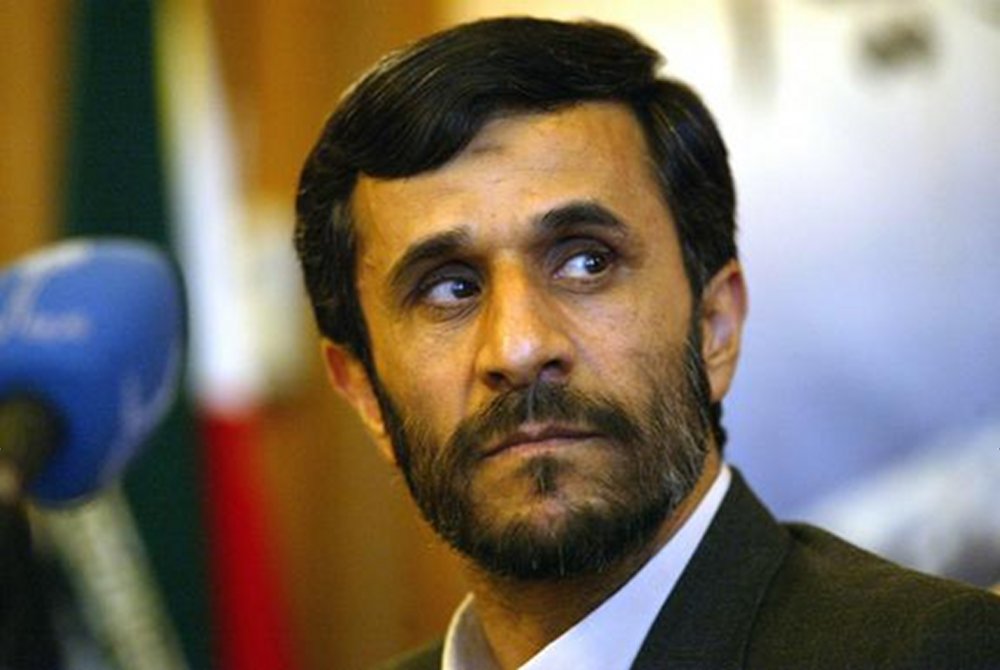The National Interest | June 21, 2010
By Abbas Milani
This article is a good synopsis of the conflict between Iran’s current President, Mahmoud Ahmadinejad and Iran’s clerical Supreme Leader, Ayatollah Ali Khamenei.
It has been two months of bizarre allegations of voodoo and venal sins taking place in the offices and homes of the president’s closest aides and confidants—not to mention the far more run-of-the-mill charges of their financial corruption and sweetheart deals in places like Belarus. It has been a time of repeated open threats of the president’s impeachment, the same president who was not too long ago the darling of Ayatollah Ali Khamenei, close as Mahmoud Ahmadinejad was to the supreme leader’s own ideas and ideals. It has been a time when more than a hundred members of Iran’s parliament, the Majlis, have requested an investigation into the last presidential election and the allegation that 9 million votes were purchased through cash payments from government coffers. Amazing how the tables can turn. Indeed, just like the police chief in Casablanca, these conservative (ayatollah-backing) members of the Majlis are “shocked, shocked” that electoral cheating is going on in Iran. Lest we forget, Mir Hussein Moussavi (the “losing candidate” in that same presidential election), his wife, Zahra Rahnavard, Mehdi Karroubi (the other “losing” candidate) and his wife, Fatemeh, have been under house arrest for months—for making the same accusations of fraud. Thousands of Iranians have been imprisoned, and about a hundred of the regime’s past ministers, deputy ministers and directors were put on Stalinist-era-like show trials to confess to the crime of alleging a bought-and-paid-for vote. Hundreds of young women and men were tortured, dozens raped and thousands forced into exile for questioning the June 2009 presidential-election results. It was of course all, according to Khamenei, a sinister U.S. plot to create a “velvet revolution” using Gene Sharp’s model and George Soros’s money.
And it has been months filled with charges of an even broader American-Zionist conspiracy. Naturally, they are the real masterminds behind the recent crisis, placing their “infiltrators” in the president’s entourage. The public has been told not to be fooled when the Western media or governments try to use these reports of voodoo, exorcism and demonic powers in the Iranian president’s office against the clerical regime; a high-ranking official close to Khamenei just announced that while these heresies were rampant and unacceptable among Ahmadinejad’s confidants, it should be remembered that the U.S. military has been tapping into such demonic forces for decades. He went on to opine that European militaries have also begun emulating America in the use of the devil’s powers.
For much of the spring, Ahmadinejad and the Iranian regime have stood on the edge of a political precipice. In early May, a commander of the Islamic Revolutionary Guards Corps (IRGC) predicted that forces loyal to Ahmadinejad, now called “the deviationist line”—yet another reminder of Stalinist- and Maoist-era monikers and purges—would “stand up” to the regime, creating a far greater threat to the country than the instability circa June 2009, when an estimated 3 million people in Tehran came out to protest what they considered a fraudulent election. Another IRGC commander predicted “a bloody year” ahead. And evidence that the looming clash might well be approaching came when forces close to Khamenei confronted the man Ahmadinejad had named governor of Shiraz Province, bringing the local government to a standstill. The president is increasingly attacked by much of the regime’s vast propaganda machine, portrayed at best as a gullible dupe. He is surely “possessed,” declared Mesbah-Yazdi, Ahmadinejad’s onetime guru and spiritual guide.
As spring came to a close, pressure against Ahmadinejad increased. It became clear he had few options left. He chose at least a temporary retreat, agreeing to humiliate himself by appearing on television and reassuring the nation that he is a docile soldier of the supreme leader. Yet even that was not enough to create at least the appearance of a truce. No sooner had Ahmadinejad performed his act of public contrition and reaffirmed his “father-son-like” relationship with Khamenei than the ayatollah’s representative to the IRGC attacked the president for his unsatisfactory formulation of fealty. Your relationship with the supreme leader, Ahmadinejad was reminded in a tone of reprimand, is not one of a son to a father but of a mere follower to a saintly leader (imam vs. mamum).
Since then, many in Ahmadinejad’s close circle of friends and allies have “been arrested and vigorously interrogated.” Soon thereafter, a prominent Friday-prayer leader (all of whom have great influence as religious figureheads—their statements would normally be read as signs that these were the words of the supreme leader himself) announced that these arrests and interrogations had taken place on direct orders of Khamenei. For reasons that are not clear, only hours after this proclamation, the supreme leader’s press office issued an elliptical statement in which it did not directly challenge the allegations but suggested that deeds and words attributed to Khamenei must come only from his press shop and no other. All said and done, it is simply hard to believe that Ahmadinejad’s closest aides could have been arrested without Khamenei’s approval. There are rumors that of those taken into custody, the one accused of being the president’s chief devil conjurer has confessed to receiving his demonic powers only after desecrating a copy of the Koran. When websites reported that the unlucky disciple of the devil had been condemned to ten consecutive hangings, another site, this one close to Ahmadinejad, indicated its support of the punishment—one more sign the president is willing to make tactical retreats in order to cling to power.

